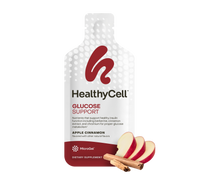Menopause is a natural phase in a woman's life that signifies the end of her reproductive years. While most people are familiar with the hot flashes and mood swings that often accompany menopause, joint pain is a lesser-known but equally common symptom. We'll explore the causes, symptoms, and treatment options for menopausal joint pain, empowering women to navigate this transformative phase with confidence and well-being. [1]
The Link Between Menopause and Joint Pain
During menopause, a woman's body undergoes significant hormonal changes. The hallmark of menopause is a marked decrease in estrogen production by the ovaries. Estrogen is a key female sex hormone, responsible for regulating the menstrual cycle, maintaining bone density, and supporting the health of the reproductive and urinary systems. Estrogen is also the hormone that plays a crucial role in maintaining the health of various tissues in the body, including joints. It helps regulate joint lubrication and the production of collagen, a protein that provides structure to joints, tendons, and ligaments.[2]
Why do we get joint pain from menopause?
When estrogen levels decline, it can lead to changes in joint structure and function, resulting in menopausal joint pain. Since estrogen receptors are present in joint tissues, estrogen drops can also lead to joint inflammation, stiffness, and discomfort. Don’t forget, the aging process itself can lead to wear and tear on the joints. Over time, joint cartilage may naturally thin, and joints may become less flexible. These age-related changes can make joints more susceptible to pain and discomfort, especially when combined with hormonal shifts. [3]
Understanding Menopause Joint Pain
Distinguishing between menopause-related joint pain and other types of joint pain is essential for accurate diagnosis and effective management. Menopause-related joint pain typically occurs in women aged 45 to 60 and is often linked to hormonal changes. It commonly affects multiple joints, with the knees, hips, fingers, and wrists being frequent areas of discomfort. [4]
What Does Joint Pain Feel Like?
Menopausal joint pain can be described as a persistent, often mild ache or soreness in the affected joints. This discomfort is frequently accompanied by stiffness, swelling, tenderness, and a reduced range of motion in the joints. People experiencing menopausal joint pain may also notice occasional sharp or stabbing pains, as well as sensations of clicking or popping in the affected joints. These symptoms can vary in intensity and may affect different joints in the body, particularly those in the knees, hips, fingers, and wrists. In contrast, other types of joint pain, such as that associated with arthritis or injury, may have different characteristics. Arthritis-related joint pain often includes symptoms like inflammation, warmth, redness, and more severe discomfort. Joint pain stemming from injuries, like sprains or fractures, is typically localized to the injured area and may involve sudden, sharp pain. These distinctions can aid healthcare professionals in making a precise diagnosis and developing an appropriate treatment plan.[5]
What factors contribute to the severity of joint pain during menopause?
The severity of joint pain during menopause can vary among individuals and is influenced by hormonal fluctuations, age, excess body weight, genetic factors, physical activity levels, diet, stress, other medical conditions, medications and lifestyle choices. [6]
Factors Aggravating Menopause Joint Pain
Lifestyle Factors: Sedentary behavior, a poor diet lacking essential nutrients, and insufficient exercise can contribute to joint pain. Physical activity helps maintain joint flexibility and overall health, making it essential during menopause.[7]
Obesity: Carrying excess body weight places added stress on weight-bearing joints like the knees and hips, intensifying joint pain. Weight management is crucial for alleviating this symptom. [8]
Stress and Sleep Disturbances: High stress levels and disrupted sleep patterns can negatively impact joint health. Chronic stress can lead to inflammation, while poor sleep hinders the body's natural repair mechanisms, both contributing to joint discomfort.[9]
Other Medical Conditions: Coexisting medical conditions like osteoarthritis or rheumatoid arthritis can worsen joint pain during menopause. Proper management of these conditions is essential to address menopausal joint pain effectively. Understanding and addressing these factors can significantly improve the management and reduction of joint pain in menopausal women.
Menopausal Joint Pain Treatment
It's essential to emphasize the importance of early intervention and consulting a healthcare professional when experiencing menopausal joint pain. Prompt action can significantly improve the management of symptoms and overall quality of life.
Treatment Options:
1) Pharmacological Interventions.
These may include Hormone Replacement Therapy (HRT) and prescribed pain relievers. Hormone replacement therapy can help alleviate joint pain by replenishing declining estrogen levels, while pain relievers can offer short-term relief from discomfort. However, it's crucial to discuss these options with your healthcare provider to determine the most suitable approach for your specific situation. [10]
2) Non-pharmacological Approaches.
Exercise: Regular physical activity is paramount for maintaining joint health. Engaging in exercises that focus on joint flexibility, strength, and mobility can help alleviate pain and improve overall joint function.
Diet and Supplements: A balanced diet rich in nutrients that support joint health is essential. Consider incorporating joint-supporting supplements like Healthycell’s Joint Health & Mobility into your daily routine. These supplements provide the necessary building blocks for healthy joints and can complement your diet effectively. [11]
Physical Therapies: Physical therapies, such as physiotherapy or chiropractic care, offer substantial relief from menopausal joint pain. These therapies can help restore joint function, reduce discomfort, and enhance overall well-being.
3) Integrative Approaches.
Integrative methods can play a significant role in managing menopausal joint pain by addressing both physical and emotional aspects of discomfort. These approaches include:
Acupuncture: This traditional Chinese practice can help alleviate joint pain by stimulating specific points in the body, promoting natural healing and pain relief.
Yoga: Yoga is known for its gentle, joint-friendly movements and stress-reducing benefits. Regular practice can improve joint flexibility, reduce pain, and enhance overall physical and mental well-being.[12]
Mindfulness and Meditation: These practices can help manage stress and improve emotional well-being, which, in turn, can have a positive impact on joint pain management.[13]
Empowerment and Support
Joint pain during menopause is a legitimate concern that deserves attention and appropriate care. It is a time in a woman’s life when they must prioritize their health, which involves regular health check-ups, a balanced diet, staying active, and managing stress.
Engaging in open conversations with healthcare professionals, such as gynecologists and rheumatologists, is crucial to effectively manage menopausal joint pain. Seeking timely medical advice ensures that any underlying conditions are addressed promptly. Many women also find solace and support by connecting with others who are experiencing similar challenges during menopause. Joining support groups or online communities focused on menopause can provide a valuable space for sharing experiences and coping strategies.
Prioritizing emotional well-being is equally vital. The physical symptoms of menopause, including joint pain, can have a profound impact on a woman's mental health. Stress-reduction techniques and maintaining a positive outlook can significantly contribute to overall well-being.
Conclusion
In closing, let's recap the essential points we've explored in this comprehensive guide to menopausal joint pain. Menopause, a natural phase signifying the end of a woman's reproductive years, often brings about unexpected challenges, including joint pain. This discomfort arises due to hormonal changes, specifically the drop in estrogen levels, which play a crucial role in maintaining joint health. Joint pain during menopause can manifest as a persistent ache, stiffness, and reduced mobility in various joints. To effectively manage menopausal joint pain, it's essential to distinguish it from other types of joint pain and recognize contributing factors. Lifestyle choices, obesity, stress, sleep disturbances, and underlying medical conditions can all exacerbate joint discomfort during menopause.
Taking a holistic approach to treatment is key. Early intervention, including consultations with healthcare professionals, can significantly enhance symptom management. Treatment options encompass pharmacological interventions such as Hormone Replacement Therapy and prescribed pain relievers, but non-pharmacological approaches like exercise, a joint-friendly diet, and supplements such as Healthycell’s Joint Health & Mobility are equally valuable. Physical therapies and integrative methods like acupuncture, yoga, and mindfulness offer additional avenues for relief.
Amid this transformative phase, women are encouraged to prioritize their health by maintaining regular check-ups, embracing physical activity, and managing stress. Seeking support and sharing experiences with healthcare professionals and like-minded individuals can be invaluable. Finally, safeguarding emotional well-being through stress-reduction techniques and a positive outlook contributes significantly to overall health and happiness. As women embark on this journey, armed with understanding and effective strategies, they can confidently navigate menopause with well-being and optimism.
About the Author
Amanda Herlocker is a Registered Dietitian with a Master's in Nutrition Science. As the founder of The Queen City Dietitian, LLC in Charlotte, NC, she brings a depth of knowledge to her writings. Amanda's expertise spans clinical nutrition, innovative recipe development, and evidence-based content creation for various platforms.
References
[i] What Is Menopause?. National Institute on Aging. https://www.nia.nih.gov/health/what-menopause. Published April 19, 2023. Accessed September 15, 2023.
[ii] Magliano M. Menopausal arthralgia: Fact or fiction. Maturitas. 2010;67(1):29-33. doi:10.1016/j.maturitas.2010.04.009
[iii] Watt FE. Musculoskeletal pain and menopause. Post Reproductive Health. 2018;24(1):34-43. doi:10.1177/2053369118757537
[iv] Yelland, S., Steenson, S., Creedon, A. & Stanner, S. (2023) The role of diet in managing menopausal symptoms: A narrative review. Nutrition Bulletin, 48, 43–65. Available from: https://doi.org/10.1111/nbu.12607
[v] E. S. Mitchell & N. F. Woods (2010) Pain symptoms during the menopausal transition and early postmenopause, Climacteric, 13:5, 467-478, DOI: 10.3109/13697137.2010.483025
[vi] Dr C. E. Szoeke, F. M. Cicuttini, J. R. Guthrie & L. Dennerstein (2008) The relationship of reports of aches and joint pains to the menopausal transition: a longitudinal study, Climacteric, 11:1, 55-62, DOI: 10.1080/13697130701746006
[vii] Yelland, S., Steenson, S., Creedon, A. & Stanner, S. (2023) The role of diet in managing menopausal symptoms: A narrative review. Nutrition Bulletin, 48, 43–65. Available from: https://doi.org/10.1111/nbu.12607
[viii] Marlatt, KL, Pitynski-Miller, DR, Gavin, KM, et al. Body composition and cardiometabolic health across the menopause transition. Obesity (Silver Spring). 2022; 30: 14–27. https://doi.org/10.1002/oby.23289
[ix] C. Frange, M. Fernanda Naufel, M. Levy Andersen, E. Beraldi Ribeiro, M. J. B. Castelo Girão, S. Tufik & H. Hachul (2017) Impact of insomnia on pain in postmenopausal women, Climacteric, 20:3, 262-267, DOI: 10.1080/13697137.2017.1309381
[x] Mei, Y., Williams, J. S., Webb, E. K., Shea, A. K., MacDonald, M. J., & Al-Khazraji, B. K. (2022). Roles of Hormone Replacement Therapy and Menopause on Osteoarthritis and Cardiovascular Disease Outcomes: A Narrative Review. Frontiers in rehabilitation sciences, 3, 825147. https://doi.org/10.3389/fresc.2022.825147
[xi] Yelland, S., Steenson, S., Creedon, A. & Stanner, S. (2023) The role of diet in managing menopausal symptoms: A narrative review. Nutrition Bulletin, 48, 43–65. Available from: https://doi.org/10.1111/nbu.12607
[xii] Wieland, L. S., Cramer, H., Lauche, R., Verstappen, A., Parker, E. A., & Pilkington, K. (2021). Evidence on yoga for health: A bibliometric analysis of systematic reviews. Complementary therapies in medicine, 60, 102746. https://doi.org/10.1016/j.ctim.2021.102746
[xiii] Reed, S. D., Guthrie, K. A., Newton, K. M., Anderson, G. L., Booth-LaForce, C., Caan, B., Carpenter, J. S., Cohen, L. S., Dunn, A. L., Ensrud, K. E., Freeman, E. W., Hunt, J. R., Joffe, H., Larson, J. C., Learman, L. A., Rothenberg, R., Seguin, R. A., Sherman, K. J., Sternfeld, B. S., & LaCroix, A. Z. (2014). Menopausal quality of life: RCT of yoga, exercise, and omega-3 supplements. American journal of obstetrics and gynecology, 210(3), 244.e1–244.e11. https://doi.org/10.1016/j.ajog.2013.11.016




